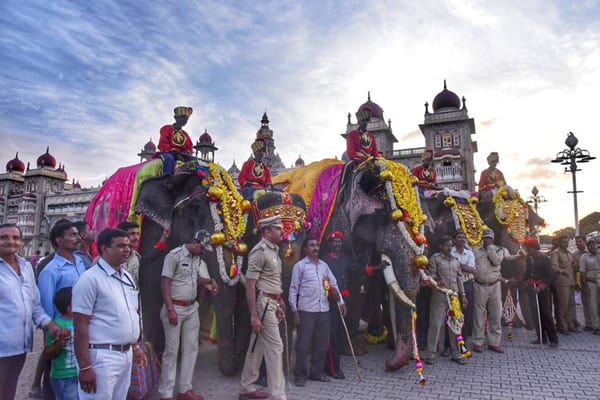Mysore, India
When Raja Wadiyar ascended the throne in 1610 AD, in Srirangapatna, the erstwhile capital, he inaugurated the Dasara Festivities which are still celebrated today with all grandeur. Mysuru, or Mahishur as it was called in the past, traces its history back to the mythical past, when Goddess Chamundeshwari of Chamundi Hill, killed the wicked buffalo-headed demon, Mahishasura. This event that marked the victory of Good over Evil is the inspiration behind the Dasara festivities. The Mysuru Palace is lit up on all the 10 days of Dasara. The festivities begin with the Wadiyar royal couple performing a special puja to Goddess Chamundeshwari in the Chamundi Temple located on the top of Chamundi Hill. On Vijayadashami, the traditional Dasara procession (locally known as Jamboo Savari) is held on the streets of the city. The main attraction of this procession is the idol of the Goddess Chamundeshwari which is placed in a golden howdah on the top of a decorated elephant. Colourful tableaux, dance groups, music bands, armed forces, folklores, the royal identities, decorated elephants, horses and camels form a part of the procession which starts from the Mysuru Palace and culminates at a place called Bannimantap, where the Banni tree (Prosopis spicigera) is worshipped.

